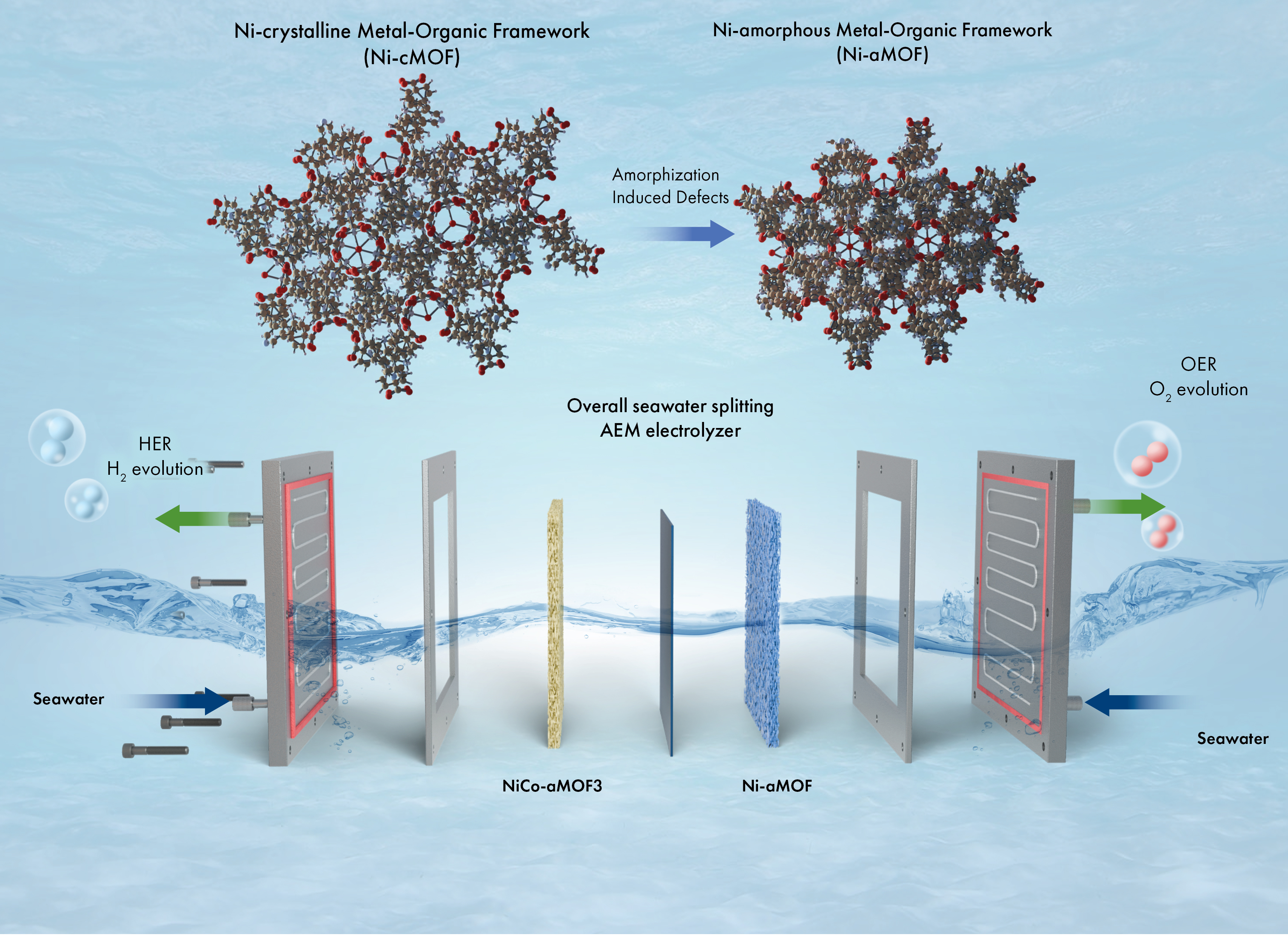

Amorphous metal–organic frameworks (aMOFs) are emerging as complementary alternatives to crystalline MOFs (cMOFs) in several electrochemical energy applications; however, their preparation typically involves harsh conditions and intricate compositions and structures. In this work, we synthesized coordinately saturated crystalline metal–organic frameworks, known as Ni-cMOF and NiCo-cMOFn (n = 1, 2, 3, and 4), which were successfully amorphized under physical force and alkaline conditions. Interestingly, the amorphized samples maintained the compositional integrity of the parent crystalline framework and exhibited nanocrystalline characteristics at the nanodomain scale. These cMOFs possess a coordinately saturated and exposed 2D sheet-like architecture of secondary building unit Ni3(μ3-O) which bestowed them with excellent catalytic properties. Real-time overall seawater splitting was conducted using the amorphized samples (aMOFs) and showed an excellent performance with oxygen selectivity and stability over 24 h at 340 mA, which is the highest compared to other amorphous MOF-based systems and the first using seawater to the best of our knowledge. We envision that this direct amorphization approach will enable the production of a new generation of amorphous MOFs as effective materials for electrocatalytic applications.
